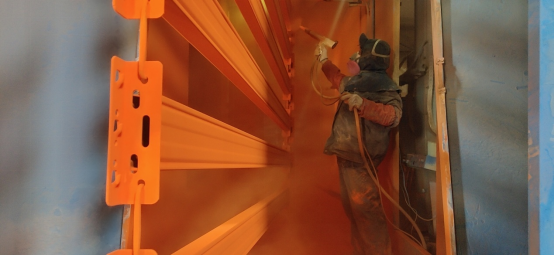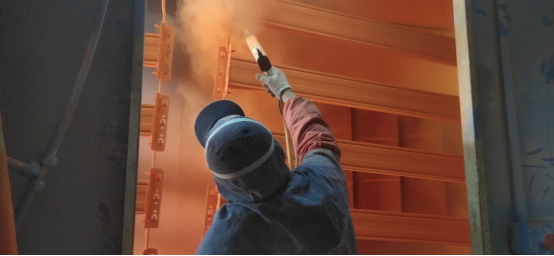|
Rack Powder Coating

Collect
DESCRIPTION Every time a rack passes through a rack powder coating system the rack is powder coated along with the items being finished. The coating applied repeatedly to the rack quickly becomes a problem, since it insulates the rack more and more with each pass, progressively decreasing part-to-rack conductivity. Proper conductivity and electrical grounding are imperative to assure consistent, quality rack powder coating. Inadequate grounding causes poor adhesion and non-uniform coating thickness as well as safety problems. Just one megohm of resistance between part and hanger may result in arcing, spark generation and fire danger.
Most finishers deal with this problem in one way or another, some by crudely grinding down contact points to restore conductivity. But eventually, all finishers have to strip away the rack powder coating buildup from the racks and fixtures. Usually, those who want to maintain good efficiency and minimize waste will strip racks at the end of each day. Some finishers prefer not to deal with rack stripping. They out-source the cleaning job. That works. Stripping becomes a specialist’s problem and the finisher does not have to spend time stripping. There is no stripping equipment to buy and maintain, nor is labor needed to operate it. But there are some disadvantages, too.
WHY CHOOSE RACK POWDER COATING ●The cost of having racks and hangers stripped by the outside source. ●The cost of labor to package, ship and unpack racks. ●The finishing shop must buy or fabricate additional racks, since racks sent out for stripping are not available to the production line. Thus, a powder coating shop will need at least twice as many racks as are in use on the line at any given time. ●Racks may be damaged in shipping to and from the strip shop, and in the process of coating removal. Some stripping shops use very high temperatures to burn off coating buildup quickly. Too-high tem- peratures can soften the rack, which shortens its useful life. ●Installing equipment to strip racks and hangers in-house is a capital expenditure. Finishers have to measure this cost against that of out-sourcing. Advantages of in-house stripping include the following: ●Process uniformity. If the finisher cleans racks and hangers daily there is much less variation in conductivity which yields better coating uniformity. ●Reject parts and even filters can be cleaned if one installs the proper system and accessories. ●In-house cleaning provides control over the stripping process, lessening danger of rack damage. ●Fewer racks, hangers and fixtures are required, since there is no need to have so many extra racks and fixtures for use while others are out for stripping.
SPECIFICATION
|
||||||||||||||||||||||||||||||||||||||||||||||||||||||||||||||||||||||||||











